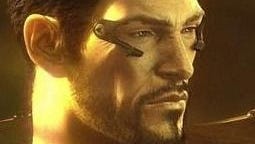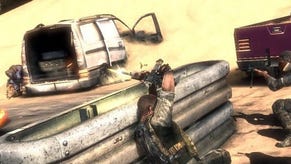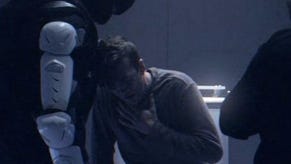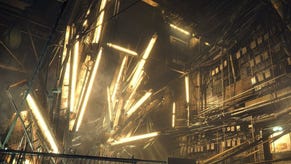Deus Ex: Fan Service
Fact after fact straight from the cyber-horse's augmented mouth.
Jonathan Jacques-Belletête, Art Director
On the influence of Deckard and dreams of electric sheep...
"Blade Runner and Ghost in the Shell have some of the best cyber-punk visuals ever created, if not some of the best visuals ever created. We knew right from the start that we didn't just want to reproduce Blade Runner (and a lot of the Blade Runner flavour is in the E3 demo - we've got tons of other places that are totally not like that) but it's something we felt we had to do.
"It's one of the main canons of cyberpunk - an Asian, super-cluttered, multi-ethnic place with all the signs in neon. From the get-go we had to nail it somewhere."
On the look and feel of Deus Ex Detroit...
"The interesting thing about Detroit is that it looks quite a bit like contemporary Detroit; this is really all about anticipating what the world will be in 2027. We've designed stuff like objects which recharge electrical cars - we've invented them, and looked at where billboard technologies are going. So it's a lot like today's Detroit, with those added layers grafted over it. Plus there are those interesting and very modern-looking buildings."
"It's sad for Detroit, because it was one of the hearts of America for quite a while because of the automobile industry. It's not really happening anymore - all those factories are abandoned. The idea is that with Sarif Industries, the company that Adam Jensen works for, David Sarif wanted to rejuvenate Detroit through the cybernetic industry.
"Just like the car industry did in the 20th century. That's why, in the game, you actually go to visit those manufacturing plants. Sarif bought those abandoned car plants and renovated them for super hi-tech cybernetics. He's sending a message to the city and the world: 'I'm from Detroit, I love this city, I'm giving it a new breath.'"
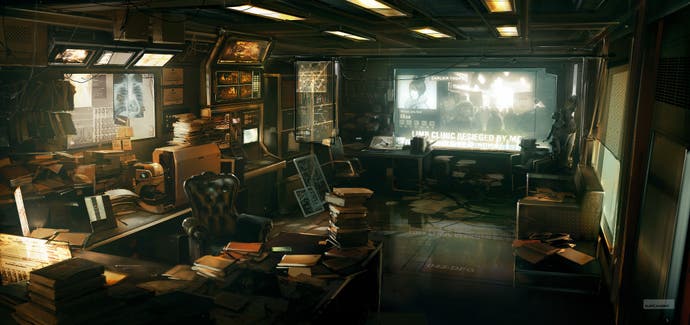
On the look and feel of Deus Ex Shanghai...
"Shanghai's Heng Sha is a lot more into the trans-humanist thing. It's a lot more accepted there - it's the Silicon Valley of all cybernetics. Within the art direction everything that's more like that is more golden, and a lot more towards the cyber-renaissance. The dual layer is inspired by a mockumentary we saw quite a while ago, which appeared to be a real documentary about Hong Kong..."
"In the game the idea isn't that it's the poor at the bottom and the rich at the top; the bottom used to be the Mecca of cybernetics, a lot of the headquarters of the great labs and manufacturing plants are there, it's just that when they built above it they chose a different architectural direction.
"So above they have new universities and new headquarters, but the bottom isn't a slum - there isn't an old school dichotomy. We put a lot of stuff in the game, like you'll see those student-types from the upper level coming downstairs at night to party, and hit the bars and brothels."
On how a prequel can look more technologically advanced than the first game...
"We released the first screenshots and people said, oh man - it's a prequel that's set twenty years before Deus Ex, and it looks more technologically advanced. Well the thing is that if you look at the computer screens or television screens in Deus Ex, then our real-world monitors are already bigger, flatter and of a higher resolution than that in the modern day.
"What do you do with that? Don't get me wrong we are doing this game for the fans and everything, but you can't just make it for the fans. It makes no sense. It's undebatable. It would be weird to make 4:3 ratio screens in the world, just because we want to fit in with the first one."
Deus Ex: Human Revolution is due out for PC, PS3 and Xbox 360 in early 2011.

